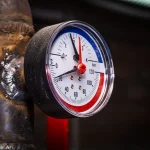Centralized lubrication systems are essential for maintaining the efficiency and longevity of machinery in various industries. These systems streamline the lubrication process by delivering the right amount of lubricant to multiple points simultaneously. Understanding the key components of these systems can help ensure their optimal performance.
Main Components of Centralized Lubrication Systems
Pump
- Function: The pump is the heart of a centralized lubrication system. It pressurizes the lubricant and sends it through the distribution lines to various lubrication points.
- Types: Pumps can be manual, electric, or pneumatic, depending on the system’s requirements and scale.
Reservoir
- Function: The reservoir stores the lubricant before it is distributed. It needs to be adequately sized to match the system’s needs and ensure a consistent supply.
- Features: Reservoirs often come with level indicators to monitor lubricant levels.
Distribution Lines
- Function: These are pipes or hoses that carry the lubricant from the pump to the lubrication points. They must be durable and properly routed to avoid leaks and ensure efficient distribution.
- Types: Distribution lines can vary in material and size based on the system’s design and the type of lubricant used.
Lubrication Points
- Function: These are the specific areas or components of machinery where lubricant is applied. Proper placement is crucial for effective lubrication.
- Types: Lubrication points can include grease fittings, oilers, or drip feeds.
Control Unit
- Function: The control unit manages the timing and quantity of the centralized lubrication systems in Indore. It ensures that the lubricant is delivered at the correct intervals and amounts.
- Features: Advanced systems may include sensors and automated controls for precise management.
Benefits of Centralized Lubrication Systems in Indore
In Indore, businesses benefit from lubrication systems by:
- Reducing Maintenance Costs: Automated systems decrease manual labor and extend equipment life.
- Improving Efficiency: Consistent lubrication helps machinery run smoother and more efficiently.
- Enhancing Safety: Minimizing manual lubrication reduces the risk of accidents and exposure to hazardous materials.
By understanding these components and their functions, businesses in Indore can optimize their centralized lubrication systems for better performance and reliability.



